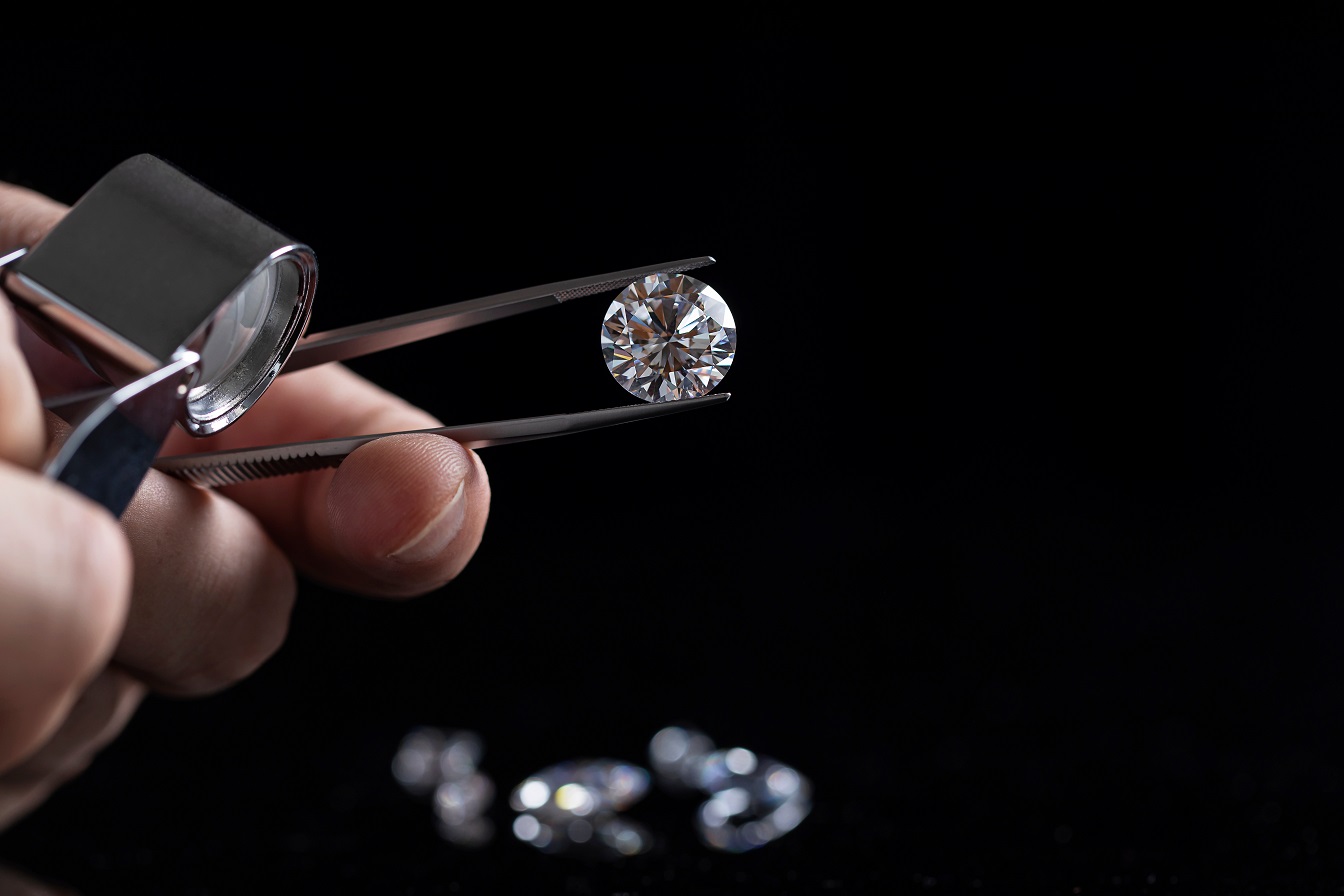The intrinsic value of diamonds has gone unquestioned for a long time.
Of course, the gems are rare and highly sought after. They have become a core part of the jewellery industry, but now things are shifting to make way for alternative aesthetics.
While traditional and naturally-occurring diamonds are certainly not going out of fashion any time soon, it does seem that there is a growing interest in alternatives. Imperfect diamonds, and synthetic ones, were previously seen as less than. Now, that is changing.
How has the diamond market changed over the years?
In one year, from 2019 to 2020, the diamond industry experienced an $11 billion decrease in value from $79 billion to $68 billion. Despite this drop, diamond jewellery still dominates the global market.
Plus, those that were fortunate enough to keep their jobs during the pandemic were often able to save more than they typically would have. Many of these individuals are now looking for something special to purchase for themselves and their loved ones.
And while polished diamonds have reached an all-time high since the beginning of the pandemic, some experts believe this price bubble could be about to burst. As with any market, there will always be some ups and downs.
Yet time and time again, the diamond industry has proved itself to be astonishingly resilient. And with a potential peak reached for polished diamonds, there seems to be plenty of room for the imperfect gem market to expand.
Are our perceptions of diamonds shifting?
Over the last few decades, there has been an increasing shift towards sustainability. This demand can also be seen within the diamond industry and the dissatisfaction that many consumers felt with the ethical and environmental costs related to the mining industry.
Many believe that the number 1 priority within the diamond business is how to operate sustainably and ethically. One of the ways in which the industry can offer the desired levels of continued improvements is by taking another look at diamonds that were once deemed as low-grade in one way or another.
Perceptions have moved to increasingly value sustainability both inside the jewellery industry and beyond. And that is not all that has changed.
Overall, people are showing less and less concern with what has previously been seen as conventionally beautiful and acceptable. Now, people want to make their own choices with fashion and jewellery too.
James Sanders of London Diamonds notes that there is a desire to select something that has meaning beyond the typical value attributed to diamonds by society.
Coloured diamonds
Traditionally only certain red, pink, or blue-tinged diamonds were seen as special. Lately, more and more people have become interested in buying diamonds of all different colours and cuts.
Increasingly, designers are seeing the potential value of coloured diamonds. The German Hemmerle designer now largely favours more subdued and subtle diamond colours since these go beautifully with increasingly popular metals such as bronze or copper.
Additionally, the jewellery industry is now seeing people move away from traditionally accepted items and towards ones that resonate and make them happy. Even as diamonds remain the most popular choice for engagement rings, there is growing interest in alternatives to the typical white diamond jewellery.
Many people want their jewellery, particularly engagement rings, to be a reflection of themselves and their relationships. For these individuals, a white diamond may not be the best choice.
Salt-and-pepper, green, and chocolate coloured diamonds are just some of the gems that have seen a rise in sales over the last few years. Some credit these trends to celebrities and their increasingly Avant Garde ring choices.
Why are people willing to buy imperfect diamonds?
In a world where many seek perfection, there is also a growing sense of disillusionment. More and more consumers are searching for something authentic, and imperfect diamonds seem to be just that. Furthermore, something flawed and irreplicable may be seen as particularly rare and desirable.
Often imperfect or coloured diamonds cost significantly less than their counterparts. For many, the more affordable price tag is part of the strong draw such gems hold. People want to spend their money as they choose, and not everyone sees traditionally perfect gems as worthwhile.
Furthermore, so-called imperfections are not always clearly visible to the naked eye. If a diamond has inclusions, but these do not affect the visual appearance of the jewel, why should it be deemed unworthy? In many cases, the average person will not be able to tell if a diamond has such imperfections, especially since they are unlikely to study the gem under a microscope.
Even gems that have noticeable inclusions may be progressively more marketable. A diamond doesn’t necessarily have to sparkle to be attractive. The cut and colour of a diamond are enough to charm some buyers, even if the jewel has more inclusions or is cloudier than would have previously been acceptable.
How can these changes be compatible with the reason for having a diamond?
Jewellers and designers are increasingly seeing the hidden value of imperfect diamonds. After all, part of the allure of traditional high-grade diamonds comes from them being rare and unique. And don’t ugly diamonds hold these same delights?
There is also undeniably a trend within high-fashion that adores the off-beat. Not everyone wants something that looks the same, and to some, uncoloured diamonds are simply not interesting or eccentric enough to capture their interest.
Top-fashion brands like Dior are even known for creating widely popular and dividedly odd items such as their Go-Go boots. There will always be some who desire jewellery that stands out from the crowd and that may even be traditionally viewed as ugly.
James Sanders of London Diamonds is an entrepreneur who understands that people want beautiful and unique diamonds that don’t cost a fortune. Where others may see a problem with imperfect jewels entering the market, James Sanders sees an opportunity to appreciate the rare and stunning.






